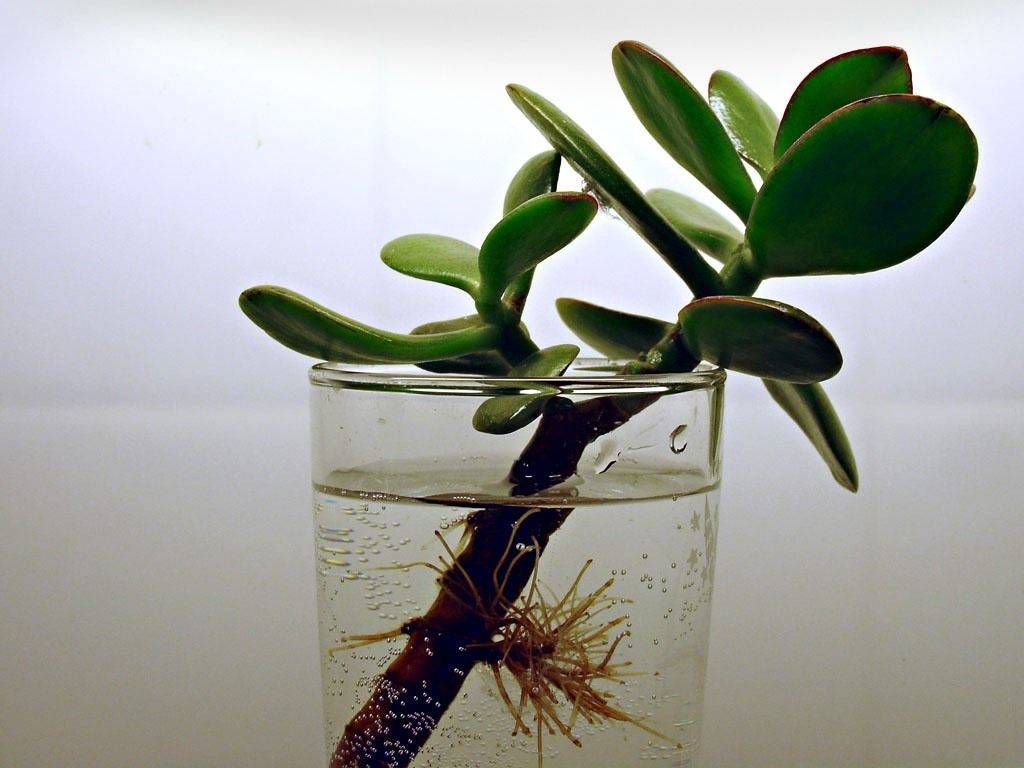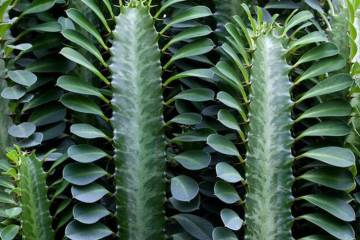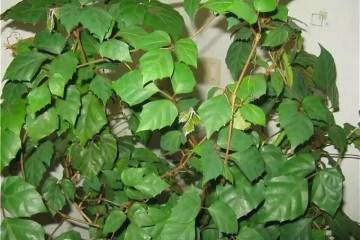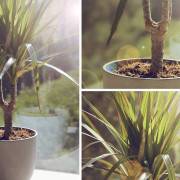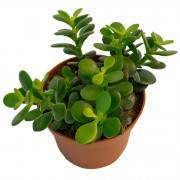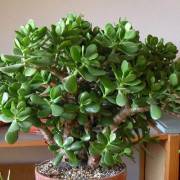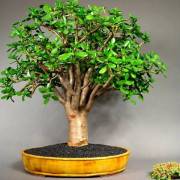Crassula - home care
Content:
Crassula is one of the common indoor flowers. This succulent plant is also called the Tolstyanka because it belongs to the Tolstyankov family. In different sources, there are 300-500 different species, more than half of which grow in South Africa. A large number of varieties are grown as decorative varieties, and for any Crassula plant, home care must correspond to some features.
Crassula - what is this flower
Crassula (lat. Crassula) has more than 400 species belonging to the Tolstyankovye family. Most are succulents, having fleshy greens and retaining fluid reserves in it. The rest of the varieties are represented by aquatic and creeping plants, as well as tree-like shrubs.
The fat woman in natural conditions is found on most continents, including arid and marsh areas. Despite the number of species, Crassula also has common features, namely fleshy leaves that grow opposite each other, and their pairs are arranged in a criss-cross direction. The shape of the leaves can be pointed, lanceolate, oval, rounded.
Varieties of home succulent
Among the variety of varieties, the most popular succulents are used for decorative purposes.
Crassula perforated
This species has diamond-shaped leaves. They are attached to the stem as if strung on it. The stems are greenish with a bluish bloom. Caring for the perforata (Perforata) is similar to other varieties.
Nealyana
Crassula Nealyana, or Nile, is a flower with horizontal shoots up to 15 cm long. Fleshy silvery leaf plates and a red rim. It blooms with single white flowers located at the tops of the shoots.
Marnier
Crassula Marnier is a compact, unpretentious plant with an elongated stem and blue heart-shaped leaves. During flowering, it is densely covered with white flowers.
Oval or ovoid
The most common species among gardeners. If in nature such a crassula can grow up to 3 m, then at home it rarely reaches 1.5 m in height. The green-gray leaves are oval in shape. The plant is characterized by fast growth and a large number of shoots.
Crassula tree
The tree-like crassula, she is also a money tree, has a bare trunk and branches. The leaf plates are fleshy, round or slightly oblong in shape. Their length is from 3.5 to 7 cm.
Lymphatic
This type of crassula is represented by a compact shrub that grows no more than 25 cm in height. The fleshy creeping stems have curled tops at the end. Prefers slightly shaded areas.Prolonged exposure to open sunlight may turn red.
Crassula milky
Ampel variety growing up to 50-60 cm in height. The fleshy gray-green leaves are slightly pointed at the end. There are small white spots on the rim, which served as the name of the species.
Caring for Crassula varieties at home
How to care for a Crassula flower is described below. There are some nuances in this process.
Illumination and temperature conditions
The fat woman prefers well-lit places, so the pot with her should be placed on the southeast or southwest side of the house. Lack of sunlight leads to a deterioration in decorative properties. With a long-term location in the shade, the crassula can be very stretched, and the deformation of the trunk often leads to its breaking off.
In summer, the Crassula fat woman feels comfortable at an air temperature of 20-30 ° C. In winter, it is recommended to create cool conditions - from 4 ° С to 12 ° С.
Watering rules and humidity
Home care for Crassula Perforata and its other varieties implies compliance with the optimal watering regime. Since all species tolerate drought well, the soil must dry out well before wetting.
During the summer months, the frequency of watering will depend on the rate of drying of the soil. Usually the interval is 3-4 days. If the leaves on the plant begin to turn yellow and fall off, most likely there is an excess of moisture in the pot. Wrinkled leaves indicate a lack of watering.
As for humidity, Crassula easily tolerates dry air, and also reacts well to outdoor air. Many gardeners in the summer put pots on loggias and balconies.
Periodically, you can spray the jerky with water at room temperature or wipe its leaves with a damp cloth.
Top dressing and soil quality
As a fertilizer, ready-made compositions intended for cacti can be used. They can be brought in from spring to autumn no more than 1 time in 3-4 weeks. No additional feeding is required in winter.
Marginalis, Nealyana and other Crassula varieties grow well in slightly acidic soil with high water and air exchange. Of the ready-made formulations, the best option would be a mixture from the Terravita company. You can prepare the soil yourself by mixing sand, humus, leaf and turf soil.
Transplants and the size of the flower container
The root system of this plant is characterized by a small volume, therefore, a pot of sufficient width, but at the same time shallow, is selected for planting. Due to the massive trunk and leaves, it is preferable to use pots made of clay or other heavy material.
At the bottom of the container, there must be a drainage layer of pebbles or expanded clay so that excess liquid does not accumulate in the pot.
Crassula care also implies its regular transplant. This procedure should be performed when the root system completely fills the previous capacity. Florists recommend replanting the bastard at least once every 1.5-2 years.
The procedure itself includes several stages:
- Choosing a new, more spacious pot. There must be drain holes at the bottom.
- 1/3 of the pot is filled with fine gravel or other stone to create a drainage layer.
- The plant, carefully removed from the previous container, is placed in a new pot, after which its root system is distributed over the existing volume.
- The soil is filled up in the required amount, then lightly compacted.
- The final stage is watering.
If compact varieties of Crassula are grown, instead of replanting, you can replace the topsoil with a new one every year.
Formation of the crown of the tree
Another step in caring for crassula is pruning it. This procedure is performed in cases when it is necessary to give the flower the shape of a tree. The event has a number of features:
- plucking buds growing between leaves;
- the procedure can be done manually or with tweezers;
- plucking is carried out to make the tree more luxuriant. In place of one removed kidney, new 2-3 will appear;
- if a branch contains more than 4 paired leaves, it is better to cut it off;
- any damage to the plant should be sprinkled with wood ash.
Propagation of a fat woman by cuttings
Reproduction of Crassula Nealyana and other varieties is carried out by cuttings. Most often, the procedure is performed in the middle of spring. A large leaf or part of the stem is carefully cut with a sharp knife, after which the cut is processed with chopped activated carbon and left for 2 days. When the cutting dries up, it is planted in a separate small container with a mixture of sand and leafy earth.
Some species are characterized by the appearance of aerial roots in a room with high humidity. For a crassula flower, reproduction in this way is preferable, since the processes will already have roots.
Growing problems, diseases and pests
When growing and caring for this flower, some difficulties may arise:
- if a flower grows in the shade, its trunk and shoots stretch out, and the plant becomes weaker;
- slow growth can be observed if the bastard lacks nutrients in the soil;
- decay of the roots and trunk, as well as leaf fall - a sign of a flower being at low air temperatures and abundant watering;
- with a lack of moisture and a high temperature in the room, leaves may fall;
- brown spots and wrinkled leaf plates indicate a lack of watering.
As for diseases, powdery mildew most often affects the fat woman. It can be found by a white bloom on young leaves and shoots. In the absence of measures, their deformation and subsidence are observed. The disease develops due to excessive humidity in the air, as well as the accumulation of water on the leaves of the plant. Fungicides will help fight powdery mildew.
Crassula can also be infected with pests. Among them are aphids, mealybugs and spider mites. They can be easily removed from the plant by wiping the affected leaves with a damp swab dipped in a special composition or alcohol tincture. The procedure should be carried out daily until the pests disappear completely.
Thus, Crassula is the best option for amateur flower growers and florists of any level. Its attractive and unusual appearance will harmoniously fit into any mix composition.





